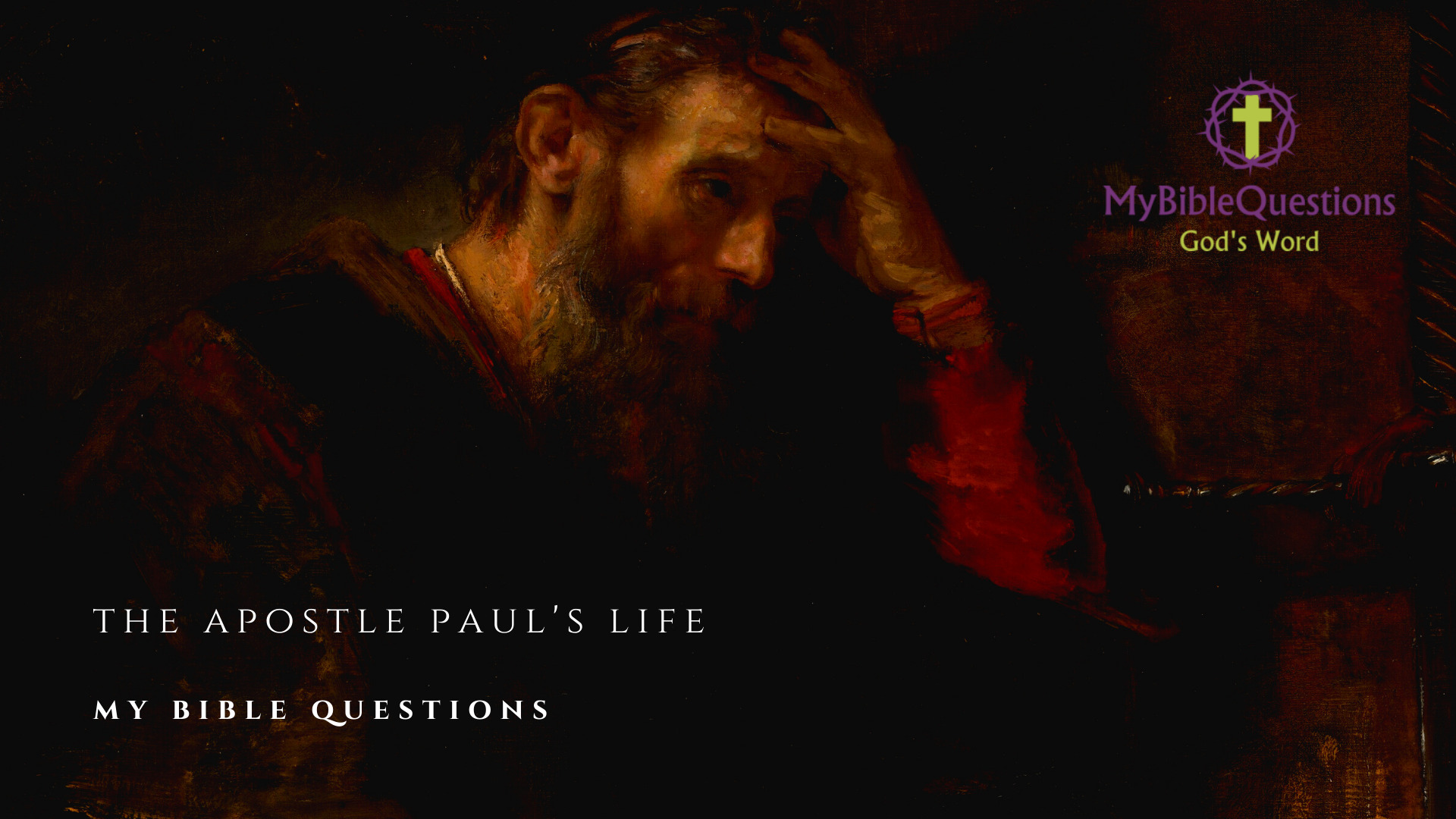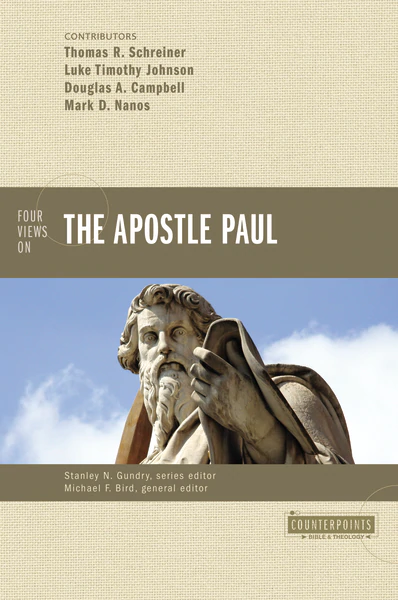“The most significant teacher in the history of Christianity has been St. Paul (died c. 66 A.D.), the first systematic theologian and writer of the Christian Church. He was the apostle to the Gentiles in the Christian Church.”
Paul was born in Tarsus, Cilicia (modern-day southeastern Turkey) to Jewish parents from the family of Benjamin. His original name was Saul or Sh’aul. His father and mother were both Romans. It’s safe to believe that Paul’s first language was Koine Greek, which was the common tongue of all educated Roman citizens across the empire. Paul was brought to Jerusalem for Bible study when he was a young boy.
He learned to write in Greek and Hebrew and became well-versed in the law while studying with a great rabbi, Gamaliel. It appears that Paul studied in Jerusalem for three years during Jesus’ public ministry and was present when Jesus was killed by the Romans. He could have even seen and heard Jesus preach. He had to have heard about Jesus and his popularity among the people.
The Times of Paul
Paul lived during the Second Jewish Commonwealth’s latter years. When he was a young man studying rabbinic theology, Palestine was already completely ruled by the Romans. The Jewish people had lost their true national sovereignty. Israel’s historic borders, as defined by the preceding Hasmonaean and Salamonic kingdoms, have been drastically reduced. Rome liked to divide its enslaved peoples into manageable regions to administer them.
Following King Agrippa, I’s death, the peace and relative stability that had prevailed during his reign were drastically disrupted. The Pharisees, the ruling Jewish class, developed a new sense of nationalism and insurrection against the foreign invader. The younger generation of Pharisees molded the people’s spirit in such a way that the Jewish uprising of 66 A.D. and the subsequent destruction of Jerusalem in 70 A.D. became unavoidable across Palestine.
Paul’s early schooling provided him with a good understanding of both oral and written Jewish law. He also learned how to interpret and remark on scripture in the traditional rabbinic way. Paul was thus heir to Pharisaism’s lengthy, rich, and diversified legacy, which climaxed in the Second Temple’s final days.
Paul had apparently earned a good reputation as a young rabbinic student since he was given permission by Jewish authorities to hunt out and prosecute members of a new sect that claimed Jesus of Nazareth was the Messiah and that the Kingdom of God was near. Paul apparently made several trips throughout Palestine in search of Christians. Paul was fully transformed during one such journey from Jerusalem to Damascus about the year 34 A.D.
The Conversion of Paul
There are four accounts of Paul’s conversion (Acts 9:3-19; 22:6-21; 26:12-18; and Galatians 1:12-16). According to the core spirit of these sources, Paul had a supernatural experience that caused him to think that Jesus was the Messiah of Israel and that God had sent Paul to proclaim Jesus’ message to all people. According to the account, he was blinded and had to fast for three days before being baptized after a Christian named Ananais lay hands on him and restored his sight. This incident has usually ascribed a date between 34 and 36 A.D.
Paul spent the next three years of his life among the Christians in Damascus. When he returned to Jerusalem, Peter and the other Christians welcomed him. Paul then returned to Tarsus, his hometown, and spent the next six years preaching in Syria and Cilicia. He and Barnabas were commissioned by the Christian authority to journey to the surrounding nations and spread the Christian word after spending the last year at Antioch.
Missionary Trips
Paul traveled across the eastern Mediterranean region three times over the next 15 years. The Pax Romana protected that region of the world at the time Paul set out on his journeys. Traveling and conversing were not a problem for Paul. A network of well-guarded and well-preserved roadways, serviced by Roman garrisons, connected fortified and prosperous towns throughout the eastern Mediterranean.
Koine Greek was a common language spoken throughout the eastern Mediterranean and utilized for all communications. Mail correspondence was a common and everyday mode of communication. Furthermore, trade and passenger maritime channels were opened between Palestine, Turkey, Greece, Italy, North Africa, and the principal Greek islands.
Jews lived in scattered but well-organized communities throughout the eastern Mediterranean, in all of the major cities. A constant connection was maintained between these Jewish communities and the central authority in Jerusalem. The establishment of the Jewish calendar, the control of the Jewish year, the offering of sacrifices in the Temple, and the general authentication of doctrines, scrolls, and instructors were all delegated to the Palestinian authority by the Jewish communities residing outside of Palestine.
Paul went around these Jewish communities as a Jew until the end of his life. The later conflict between Paul and the Jews, as well as between Christianity and Judaism, has disguised this reality. Paul was only expelled from Jewish communities’ synagogues near the end of his life. Only in the last 20 years of the first century were Christians denied access to synagogues.
Paul’s first journey, which began around 45 A.D. and ended around 45 A.D., led him via Cyprus and southeastern Turkey before returning to Antioch by the same route. Paul’s second excursion took him overland through Turkey and then to mainland Greece, where he passed through Athens before returning to Palestine through Rhodes the same year. Around 52 A.D., he landed on the coast of Palestine at Tyre. Paul penned his two Letters to the Thessalonians during this second tour.
Paul’s third journey began in Antioch, continued through Turkey, stopping at Ephesus and Chios, and then continued via Macedonia to mainland Greece. From Turkey’s southwest coast to the Palestinian port of Tyre, he came home by the sea. Paul wrote his Letter to the Galatians, two Letters to the Corinthians, and his Letter to the Romans during this third tour.
Paul penned a number of letters between the start of his missionary missions and his death, which subsequently became part of the Christian New Testament. He wrote a total of 13 letters before his death. The Letter to the Hebrews, historically attributed to Paul, is now widely believed to have been written by one of his disciples.
Paul’s teaching was based on three basic ideas: Jesus was the Son of God and the Messiah promised by Israel’s prophets; his death atoned for all men’s sins and opened heaven for humanity, and the Mosaic Law had been abolished and replaced by the Law of Jesus as a result of Jesus’ salvation. As a result, there was no longer any difference between Jew and Gentile. Paul regularly employed Bible texts to support his arguments, interpreting them using the rabbinic exegesis method he had learned in Jerusalem.
Attitudes regarding the Jewish people and the Law
Paul’s writings are notable for two aspects: the Jewish law and the Jewish people as God’s chosen nation. On both counts, his attitude needs to be explained. Paul felt that the law had been abrogated, not just altered and ennobled, since Christ’s arrival. Later anti-Semitism was fueled by Paul’s words and notions when he described Jewish law, both oral and written, as purely a legal exercise.
In Paul’s writings, there is no evidence of this pessimism. There is a notion that all of the law’s grandeur and all of the law’s salvation promises have been transferred to the new law of Jesus. Paul divided world history into two periods: before Jesus’ arrival, when the law was God’s visible means of guiding men to redemption, and after Jesus’ death when trust in and love for Jesus was the exclusive means of salvation.
Paul most likely abolished the need to follow the law in his later years. It’s important to recall that the Council of Jerusalem (ca. 49 A.D.) freed all Jewish converts to Christianity from any responsibility to follow Jewish law. As Paul’s teachings progressed, he encountered increasingly vehement hostility from the Jewish authorities. This opposition undoubtedly deepened Paul’s conviction that the Jewish law merely served to blind Jews and potentially Gentiles to the reality of Jesus.
However, Paul’s attitude toward the Jews as the chosen people remained a source of persistent doubt in his mind. Paul declared in his Letter to the Romans that the Jews were and would continue to be God’s chosen people. He asserted this, remarking that God’s decrees are unchangeable.
As a Christian believer, on the other hand, he claimed that Christians occupy a particular place in God’s favor because they had become the carriers of Jesus’ salvation, which had become prominent in God’s plan for man.
To get around this problem, Paul used the ruse of claiming that the Jews were still the chosen people, but that their eyes had been covered by a veil of ignorance. Only on the final day, when the world came to an end and Jesus returned to judge all men, he declared, would the veil be lifted.
Methods of Instruction
Throughout his missionary missions, Paul’s teaching methods remained consistent. In every town he visited, he went to the local synagogue or Jewish community meeting place and preached to the Jews first. He then preached to the Gentiles in the area.
However, as Paul’s name became more well-known and his preaching became more widespread, he faced increasing opposition from Jewish communities. His preaching began to focus more and more on the Gentiles. Paul faced great physical and social hardships from both Jews and Gentiles, including being lashed, stoned, imprisoned, treated with indignity, and expelled multiple times.
He formed an acerbic critique of his former coreligionists from the start of his apostolate, claiming that by keeping Moses’ law and refusing to trust in Jesus, they were rejecting their destiny as God’s chosen people.
As a result, opposition to Paul grew in Jewish communities outside of Palestine, and word reached Jerusalem that Paul posed a threat to Judaism in the Diaspora.
The Last Journey
Paul recommended a trip to Rome and Spain when he returned to Jerusalem following his third missionary expedition. During his stay, he was identified by a group of Asian Jews, who quickly labeled him a rogue and a nuisance in the Jewish community.
The Roman civic authority intervened and saved Paul in the ensuing riot. Paul was detained for causing the commotion. He was saved from assassination as a Roman citizen and then taken to Caesarea, the Roman coastal capital, where he was judged by the Roman procurator, Felix.
Paul utilized his right as a Roman citizen to be moved to Rome for trial by Caesar to avoid being sent back to Jerusalem for prosecution, where he would have faced certain death. In the spring of 60 A.D., he arrived in Rome following a maritime expedition. He wrote his Letters to the Colossians, Ephesians, Philippians, Philemon, Timothy, and Titus during his captivity in Rome.
His future life is little known, except that he may have visited Spain before his death. According to all accounts, he was martyred in Rome sometime between 66 and 67 A.D.


